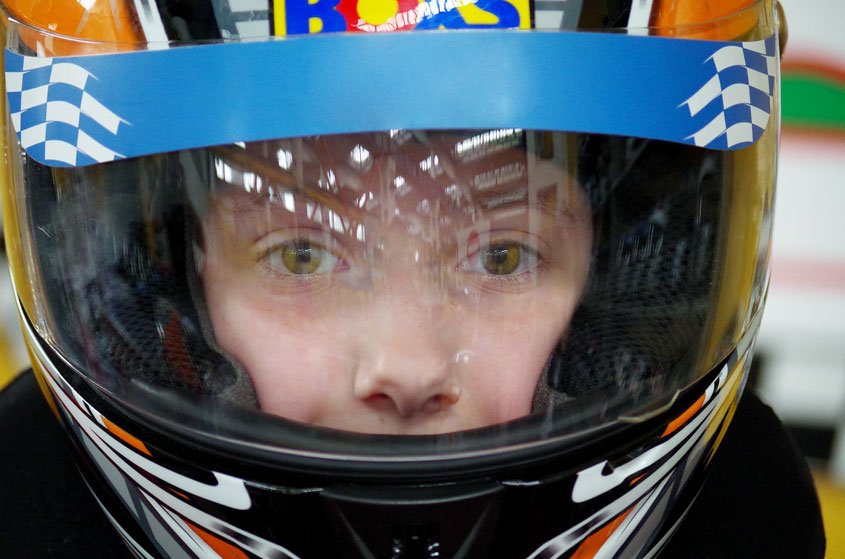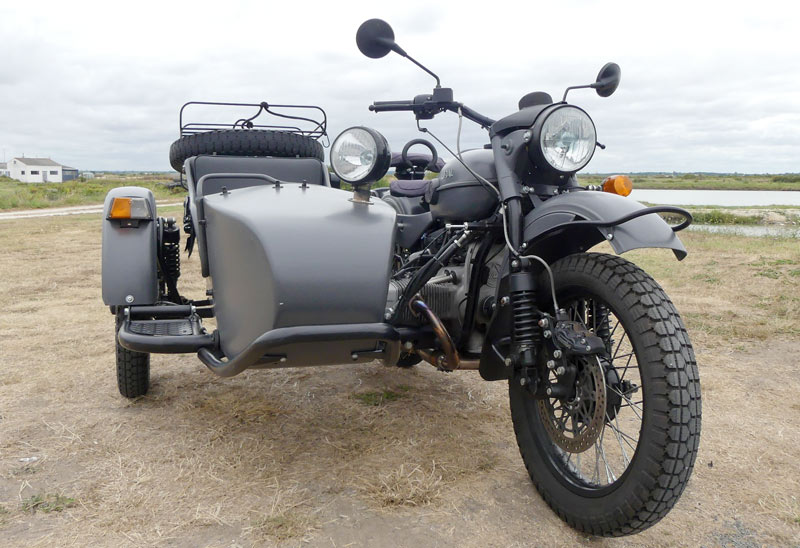Taking the Family for a Ride? Check Out These Motorcycle Safety Tips
In Indiana, fall is a perfect time to ride your motorcycle and enjoy the beauty of the changing leaves. For some, motorcycles are a family affair. Instead of loading up a minivan, some families pile onto bikes to enjoy the crisp air. Some parents use a clear, fall day as the perfect opportunity to give […]

November 1, 2017

In Indiana, fall is a perfect time to ride your motorcycle and enjoy the beauty of the changing leaves. For some, motorcycles are a family affair. Instead of loading up a minivan, some families pile onto bikes to enjoy the crisp air. Some parents use a clear, fall day as the perfect opportunity to give their children some riding lessons.
Whatever your reason, there’s nothing wrong with sharing your love of motorcycles with your children. However, there are some extra precautions you should take to make sure your children stay safe.
Purchase a Child’s Helmet

One of the best things you can do to protect your child is to purchase them a child’s motorcycle helmet. According to Indiana law, anyone under the age of 18 must wear a helmet while on a motorcycle. It’s important that this helmet fits your child correctly in order to ensure maximum protection.
Although adults aren’t required by law to wear a helmet in Indiana, you may want to consider purchasing one for yourself as well. According to the Insurance Institute for Highway Safety (IIHS), helmets are 67 percent effective in preventing brain injuries, and 37 percent effective in preventing motorcycle deaths.
In 58 percent of Indiana motorcycle fatalities in 2015, the motorcyclist or their passengers weren’t wearing helmets. Even if your child is simply a passenger on your motorcycle, they must be wearing a helmet at all times.
When purchasing your child’s helmet, make sure to buy a regulation helmet certified by the U.S. Department of Transportation (DOT). Novelty helmets, often referred to as skullcaps, beanies, or German army style helmets, are more of a fashion statement than a safety feature. According to the National Highway Traffic Safety Administration (NHTSA), from 2007-2008, 56 percent of motorcyclists injured in crashes who were wearing novelty helmets had serious head injuries. Only 19 percent of motorcyclists injured in crashes who were wearing regulation helmets had similarly severe head trauma.
A regulation helmet should have “DOT” on the back shell, the label “FMVSS No.218 certified,” and labels indicating the manufacturer, brand, and model designation. Be wary of simply relying on the “DOT” label; some novelty helmet manufacturers design counterfeit decals to trick buyers.
Because your child is still growing, you’ll have to purchase new motorcycle helmets frequently. Although this may feel like a waste, remember that, by law, your child cannot ride or operate a motorcycle without a helmet. Also, in general, helmets should be replaced every 5 years or if the helmet has incurred even minor damage.
Invest in Child-Appropriate Safety Gear

Even if you take your child for a quick ride around the block, you should make sure they are wearing appropriate gear. That means investing in a jacket, pants, boots, and gloves. Not only does Indiana law require your child to wear a helmet, but it also requires your child to wear protective eyewear. Your child can wear “protective glasses, goggles, or transparent face shields,” according to the Indiana Code 2017.
Footwear is especially important when it comes to children and motorcycles. Loose laces can easily get tangled up in the chain. Make sure your child’s footwear is secure and sturdy.
You may want to consider investing in a belt or harness for your child to keep them on the bike. The belt would go around your child and buckle around your waist, keeping them close behind you and making it easier for them to grip your waist. A harness provides even more protection and keeps your child attached to you regardless of whether or not they’re holding on. Consider the age and ability of your child before deciding whether a belt or a harness is appropriate for your family.
Determine the Safest Place for Your Child

If you’re riding on one motorcycle with your child, make sure they are behind you. This may seem counter-intuitive; many parents prefer to be able to see their children at all times. Also, many children are small enough that you would be able to see clearly if they were in front of you. So why should they sit in the back?
Placing your child in front is dangerous for many reasons. First, it makes it more difficult for you to operate your motorcycle. You may be tempted to take a hand off of the handlebars and hold your child in place. That’s a parental instinct that could backfire easily. Depending on the size of your child, you also may not be able to have as firm of a grip on the handlebars as you normally would. This simply increases the possibility that you may lose control and crash. Also, your child is more likely to fall off of your bike if they ride in front rather than behind.
You may decide to invest in a sidecar to give your child their own space and to allow yourself to operate your motorcycle like normal. If you use a sidecar, make sure to practice riding with it a few times before putting any passengers in it. Riding with a sidecar changes your vehicle’s center of gravity and makes it easier to flip, particularly on turns. When you practice, put weight in the sidecar so it mimics the weight of a passenger and you get a feel for how your center of gravity will change with a passenger.
Help from an Indiana Motorcycle Accident Lawyer
We hope your family stays safe the next time you go for a ride. But no matter how many precautions you take, accidents can still happen due to someone else’s recklessness. If you’ve been injured in a motorcycle accident, or someone in your family has, Hensley Legal Group can help. Call us today or contact us online for a free consultation.